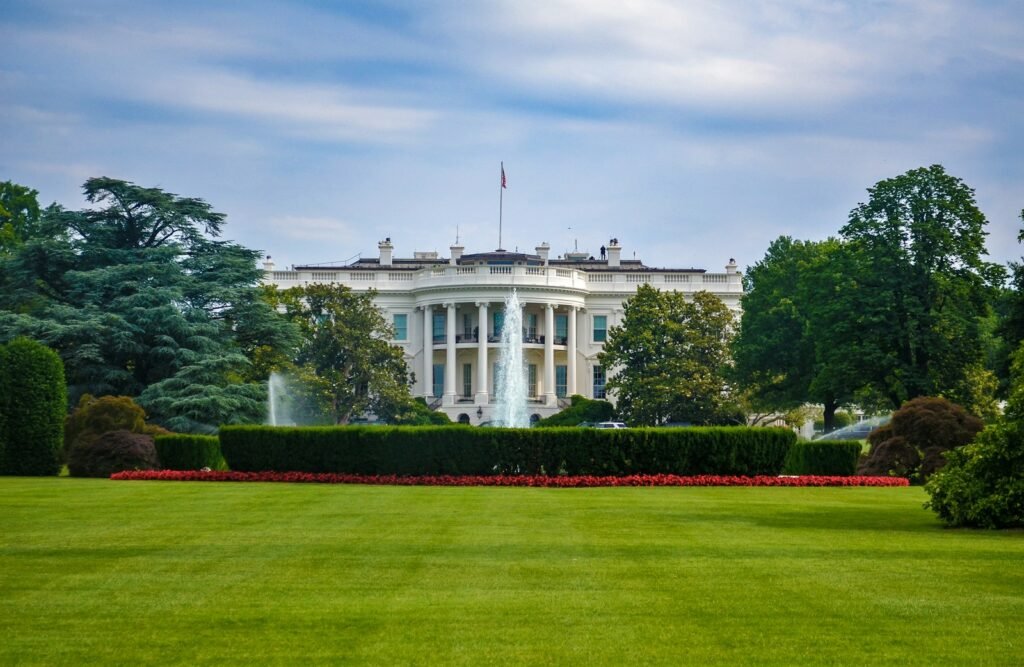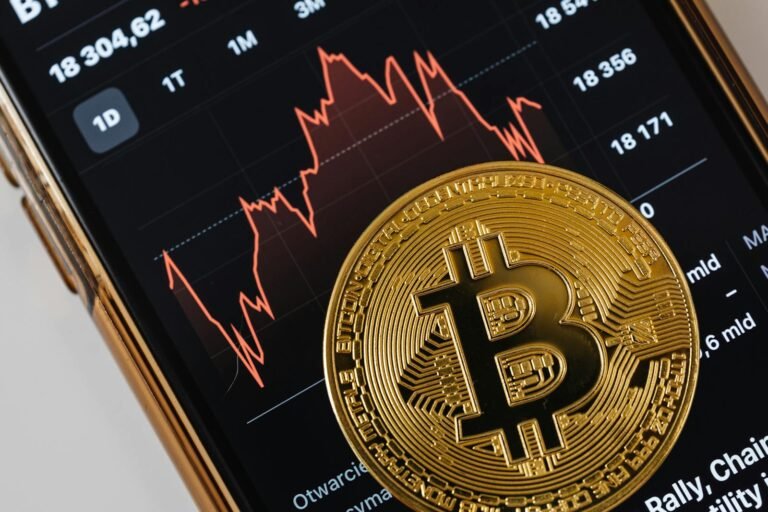
The ink was barely dry on President Donald Trump’s latest executive order before the global markets went into freefall. Stocks plunged. Cryptocurrencies bled out—bitcoin lost 5.95% while Trump Official memecoin suffered a massive 14.55%. And economists, politicians, and investors are now locked in a vicious debate: Are these liberation day tariffs (reciprocal tariffs or simply Trump Tariffs) a masterstroke—or a catastrophic miscalculation?
The so-called Liberation Day tariffs—a sweeping 10% baseline tax on all imports, plus targeted punitive rates as high as 46% on Vietnam and 34% on China—have sent shockwaves through the world economy. Supporters hail them as the long-overdue reset of America’s trade policy. Critics warn they could trigger runaway inflation, cripple supply chains, and push the U.S. into recession.
So who’s right?
Let’s break it down—no spin, no agenda. Just the raw facts, the potential fallout, and the real-world consequences already unfolding.
Table of Contents
The Liberation Day Tariffs: What Just Happened?
The world will remember April 2, 2025. Why? That’s the damn day President Donald Trump announced sweeping reciprocal tariffs (Liberation Day Tariffs) or just Trump Tariffs.
Here is how the world reacted to the news:
Apple Shares Fall the Most Since March 2020 on New Tariffs
— The Information
From CNBC
Dow nosedives 1,600 points, S&P 500 and Nasdaq drop the most since 2020 after Trump’s tariff onslaught
From CNN
NYSE trader describes mood on the floor on worst day since 2020
Reuters
Trump tariffs sow fears of trade wars, recession and a $2,300 iPhone
At 12:01 AM EDT on April 5, every single import entering the United States will be slapped with a 10% tariff. No exemptions. No exceptions.
But that was just the opening salvo.

By April 9, China faces a 34% total tariff (10% baseline + 24% additional). Vietnam gets hit with 46%. The European Union? 20%. And Canada and Mexico, already under 25% tariffs since February, remain in the crosshairs.
U.S. Liberation Day Tariff Rates as Announced by Trump
Each entry includes:
- U.S. Tariff (%): The tariff imposed by the U.S. on the country’s goods.
- Foreign Tariff (%): The tariff the country imposes on U.S. goods (in parentheses).
List of Tariffs by Country
| Country | U.S. Tariff (%) | Foreign Tariff (%) |
|---|---|---|
| Afghanistan | 10% | 49% |
| Albania | 10% | 10% |
| Algeria | 30% | 59% |
| Andorra | 10% | 10% |
| Angola | 32% | 63% |
| Anguilla | 10% | 10% |
| Antigua and Barbuda | 10% | 10% |
| Argentina | 10% | 10% |
| Armenia | 10% | 10% |
| Aruba | 10% | 10% |
| Australia | 10% | 10% |
| Azerbaijan | 10% | 10% |
| Bahamas | 10% | 10% |
| Bahrain | 10% | 10% |
| Bangladesh | 37% | 74% |
| Barbados | 10% | 10% |
| Belize | 10% | 10% |
| Benin | 10% | 10% |
| Bermuda | 10% | 10% |
| Bhutan | 10% | 10% |
| Bolivia | 10% | 20% |
| Bosnia and Herzegovina | 35% | 70% |
| Botswana | 37% | 74% |
| Brazil | 10% | 10% |
| British Indian Ocean Territory | 10% | 10% |
| British Virgin Islands | 10% | 10% |
| Brunei | 24% | 47% |
| Burundi | 10% | 10% |
| Cabo Verde | 10% | 10% |
| Cambodia | 49% | 97% |
| Cameroon | 11% | 22% |
| Cayman Islands | 10% | 10% |
| Central African Republic | 10% | 10% |
| Chad | 13% | 26% |
| Chile | 10% | 10% |
| China | 34% | 67% |
| Christmas Island | 10% | 10% |
| Cocos (Keeling) Islands | 10% | 10% |
| Colombia | 10% | 10% |
| Comoros | 10% | 10% |
| Cook Islands | 10% | 10% |
| Costa Rica | 10% | 17% |
| Côte d’Ivoire | 21% | 41% |
| Curaçao | 10% | 10% |
| Democratic Republic of the Congo | 11% | 22% |
| Djibouti | 10% | 10% |
| Dominica | 10% | 10% |
| Dominican Republic | 10% | 10% |
| Ecuador | 10% | 12% |
| Egypt | 10% | 10% |
| El Salvador | 10% | 10% |
| Equatorial Guinea | 13% | 25% |
| Eritrea | 10% | 10% |
| Eswatini | 10% | 10% |
| Ethiopia | 10% | 10% |
| European Union | 20% | 39% |
| Falkland Islands | 41% | 82% |
| Fiji | 32% | 63% |
| French Guiana | 10% | 10% |
| French Polynesia | 10% | 10% |
| Gabon | 10% | 10% |
| Gambia | 10% | 10% |
| Georgia | 10% | 10% |
| Ghana | 10% | 17% |
| Gibraltar | 10% | 10% |
| Grenada | 10% | 10% |
| Guadeloupe | 10% | 10% |
| Guatemala | 10% | 10% |
| Guinea | 10% | 10% |
| Guinea-Bissau | 10% | 10% |
| Guyana | 38% | 76% |
| Haiti | 10% | 10% |
| Heard and McDonald Islands | 10% | 10% |
| Honduras | 10% | 10% |
| Iceland | 10% | 10% |
| India | 26% | 52% |
| Indonesia | 32% | 64% |
| Iran | 10% | 10% |
| Iraq | 39% | 78% |
| Israel | 17% | 33% |
| Jamaica | 10% | 10% |
| Japan | 24% | 46% |
| Jordan | 20% | 40% |
| Kazakhstan | 27% | 54% |
| Kenya | 10% | 10% |
| Kiribati | 10% | 10% |
| Kosovo | 10% | 10% |
| Kuwait | 10% | 10% |
| Kyrgyzstan | 10% | 10% |
| Laos | 48% | 95% |
| Lebanon | 10% | 10% |
| Lesotho | 50% | 99% |
| Liberia | 10% | 10% |
| Libya | 31% | 61% |
| Liechtenstein | 37% | 73% |
| Madagascar | 47% | 93% |
| Malawi | 17% | 34% |
| Malaysia | 24% | 47% |
| Maldives | 10% | 10% |
| Mali | 10% | 10% |
| Marshall Islands | 10% | 10% |
| Martinique | 10% | 10% |
| Mauritania | 10% | 10% |
| Mauritius | 40% | 80% |
| Mayotte | 10% | 10% |
| Micronesia | 10% | 10% |
| Moldova | 31% | 61% |
| Monaco | 10% | 10% |
| Mongolia | 10% | 10% |
| Montenegro | 10% | 10% |
| Montserrat | 10% | 10% |
| Morocco | 10% | 10% |
| Mozambique | 16% | 31% |
| Myanmar (Burma) | 44% | 88% |
| Namibia | 21% | 42% |
| Nauru | 30% | 59% |
| Nepal | 10% | 10% |
| New Zealand | 10% | 20% |
| Nicaragua | 18% | 36% |
| Niger | 10% | 10% |
| Nigeria | 14% | 27% |
| Norfolk Island | 29% | 58% |
| North Macedonia | 33% | 65% |
| Norway | 15% | 30% |
| Oman | 10% | 10% |
| Pakistan | 29% | 58% |
| Panama | 10% | 10% |
| Papua New Guinea | 10% | 15% |
| Paraguay | 10% | 10% |
| Peru | 10% | 10% |
| Philippines | 17% | 34% |
| Qatar | 10% | 10% |
| Republic of the Congo | 10% | 10% |
| Réunion | 37% | 73% |
| Rwanda | 10% | 10% |
| Saint Helena | 10% | 15% |
| Saint Kitts and Nevis | 10% | 10% |
| Saint Lucia | 10% | 10% |
| Saint Pierre and Miquelon | 50% | 99% |
| Saint Vincent and the Grenadines | 10% | 10% |
| Samoa | 10% | 10% |
| San Marino | 10% | 10% |
| São Tomé and Príncipe | 10% | 10% |
| Saudi Arabia | 10% | 10% |
| Senegal | 10% | 10% |
| Serbia | 37% | 74% |
| Sierra Leone | 10% | 10% |
| Singapore | 10% | 10% |
| Sint Maarten | 10% | 10% |
| Solomon Islands | 10% | 10% |
| South Africa | 30% | 60% |
| South Korea | 25% | 50% |
| South Sudan | 10% | 10% |
| Sri Lanka | 44% | 88% |
| Sudan | 10% | 10% |
| Suriname | 10% | 10% |
| Svalbard and Jan Mayen | 10% | 10% |
| Switzerland | 31% | 61% |
| Syria | 41% | 81% |
| Taiwan | 32% | 64% |
| Tajikistan | 10% | 10% |
| Tanzania | 10% | 10% |
| Thailand | 36% | 72% |
| Timor-Leste | 10% | 10% |
| Togo | 10% | 10% |
| Tokelau | 10% | 10% |
| Tonga | 10% | 10% |
| Trinidad and Tobago | 10% | 12% |
| Tunisia | 28% | 55% |
| Turkey | 10% | 10% |
| Turkmenistan | 10% | 10% |
| Turks and Caicos Islands | 10% | 10% |
| Tuvalu | 10% | 10% |
| Uganda | 10% | 20% |
| Ukraine | 10% | 10% |
| United Arab Emirates | 10% | 10% |
| United Kingdom | 10% | 10% |
| Uruguay | 10% | 10% |
| Uzbekistan | 10% | 10% |
| Vanuatu | 22% | 44% |
| Venezuela | 15% | 29% |
| Vietnam | 46% | 90% |
| Yemen | 10% | 10% |
| Zambia | 17% | 33% |
| Zimbabwe | 18% | 35% |
Source: Forbes
Key Notes:
- Baseline Tariff: Countries not listed above will face a 10% tariff on all imports to the U.S.
- Reciprocal Structure: The U.S. tariffs are designed to match or respond to the tariffs imposed by each country.
Trump’s reasoning? Simple. America has been getting played.
For decades, foreign nations—especially China—have exploited weak U.S. trade policies, flooding markets with cheap goods while blocking American exports. The result? Over $1.2 trillion trade deficit in 2024 alone, according to Factsheet published on 2 April 2025 by U.S. Embassy in Singapore.
Trump’s solution? If they won’t play fair, tax them into submission.
But will it work?
How the Rich Make Money: Secrets from the World’s Top Billionaires
Why do billionaires keep getting richer while others struggle? What do they know that most people don’t?
In How the Rich Make Money, you’ll uncover the powerful strategies, mindset shifts, and wealth-building techniques that the world’s top billionaires use to grow their fortunes.

The Case for Genius: Why Supporters Are Cheering
1. “Finally, America Fights Back”
For years, U.S. manufacturers have begged for protection from dumping—foreign companies selling goods below cost to kill competition. The steel industry, semiconductors, even agriculture have all suffered.
Now, with tariffs making imports more expensive, domestic producers can compete again. Early signs? U.S. steel stocks surged 8% in pre-market trading.

2. “China’s Worst Nightmare”
Beijing has long relied on asymmetrical trade warfare—flooding the U.S. with cheap goods while keeping its own markets locked down.
But a 34% tariff changes the game. Chinese factories that relied on U.S. consumers now face a brutal choice: raise prices (and lose sales) or eat the cost (and bleed profits). Either way, America wins.
3. “The $1.8 Trillion Windfall”
The Tax Foundation estimates these tariffs could generate $1.8 trillion in revenue over ten years. That’s money Trump wants to use for:
- Infrastructure projects
- Tax cuts for middle-class families
- Debt reduction
If managed right, this could be a game-changer for the U.S. Treasury.
4. “Ending the Fentanyl Pipeline”
One of the most underreported aspects? The 25% tariffs on Mexico and Canada aren’t just about trade—they’re about drugs.
Trump has directly linked these tariffs to stopping fentanyl smuggling. If it works, it could save thousands of American lives.
Discover 8 Things You Need to Consider Before Investing
The Case for Disaster: Why Critics Are Panicking
1. “Inflation Tsunami Coming”
A 10% tariff on everything means higher prices on everything.
- Electronics? More expensive.
- Cars? More expensive.
- Food? More expensive.
The Federal Reserve was already struggling with inflation. Now, economists predict another 2-3% spike in consumer prices within months.
2. “Supply Chain Chaos 2.0”
Remember the COVID-era shipping nightmares? They might look mild compared to what’s coming.
- Vietnam (46% tariff) is a major tech supplier. Apple, Nike, Samsung all rely on Vietnamese factories.
- China (34% tariff) dominates electronics, rare earth metals, and pharmaceuticals.
- The EU (20% tariff) supplies machinery, luxury goods, and autos.
If these countries retaliate (and they will), U.S. businesses could face shortages, delays, and skyrocketing costs.
3. “The Coming Trade War”
China has already threatened “swift and severe” retaliation. Possible moves:
- Banning U.S. tech imports (Apple, Tesla, Intel)
- Dumping U.S. Treasury bonds (crashing the dollar)
- Flooding markets with cheap EVs and solar panels to undercut U.S. green energy
The EU isn’t sitting idle either. France and Germany are reportedly drafting counter-tariffs on U.S. agriculture and Big Tech.
4. “The Stocks and Crypto Collateral Damage”


Markets hate uncertainty—and crypto and stocks got wrecked.
- Amazon received a 9.25% superkick.
- Apple got 8.98% loss.
- Bitcoin dropped 5.95% in hours.
- Ethereum fell 6.78%.
- Altcoins like XRP, Dogecoin, Toncoin, Chainlink, Hyperliquid, PI, Near Protocal, PEPE, Cronos, Trump Official, and Bittensor (TAO) crashed 10%+.
- Apple dropped 8%
Why? Because tariffs = inflation fears = Fed may delay rate cuts = investors flee risky assets.
But here’s the twist: Long-term, Bitcoin could benefit if the dollar weakens.
ALSO READ:
Crypto and Stocks: A Beginner’s Survival Guide
5 Crypto Myths That Keep Beginners Broke
The Verdict: Is Trump’s Liberation Day Tariffs Genius or Suicide Move?
Right now, it’s too early to tell. But here’s what we know:
If Trump Wins the Trade War…
- U.S. manufacturing roars back.
- China’s economy takes a major hit.
- The dollar strengthens as America regains economic dominance.
If This Blows Up…
- Inflation spirals out of control.
- Global supply chains snap.
- The U.S. slides into recession before the 2026 midterms.
One thing’s certain: The world just changed overnight. And whether this move is remembered as Trump’s masterstroke or his biggest blunder depends entirely on what happens next.
Stay tuned. The trade war has only just begun.
What Do You Think?
Are Trump’s tariffs bold leadership or economic suicide? Drop your thoughts in the comments.
Subscribe Now!
Join our newsletter for weekly doses of crypto and stock market chaos.
Want more deep dives on tariffs, crypto, and market impacts? Subscribe for exclusive updates.





